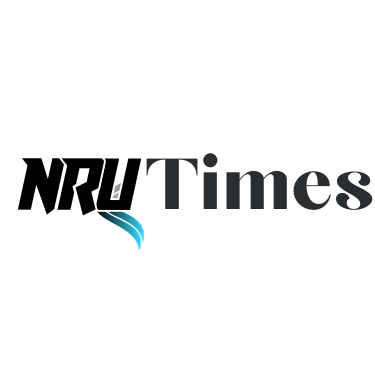Introduction to NASA’s dream
For a long time, the idea of NASA of flying faster than sound has been exciting to us. The shiny silver arrows racing through the sky, ignoring time and space limits, suggested a world where continents got smaller and trips turned into whispers. But, this wish was still on the ground. It couldn’t fly free because of the loud sonic booms that stopped older supersonic attempts. Now, with the display of the X-59 QueSST, NASA takes a big step towards making flight quieter. They are bringing back hope for a future where supersonic speed goes past the noise it makes.
The X-59 QueSST is a long, pointed nose and wide wings. It’s more than just a car. It’s the result of lots of careful study, big improvements in how air moves and strong will to beat sonic booms. These big booms, made by waves created when a plane goes faster than the speed of sound, stopped older super-fast planes like Concorde. This was because people were worried and there were rules to protect nature.
Breaking the Mold:
But, the X-59 QueSST has a smart design that stops the boom before it starts. Its thin shape reduces friction and makes air flow better. Engine doors and engine outlets have been carefully made to share shockwaves, mixing them together which weakens before they hit the ground. This causes a “thump” instead of a big noise, which greatly reduces how loud it feels. This could help open up the path for flying faster than sound on land.
Testing the Skies:
The trip for the X-59 QueSST still has a long way to go. The big reveal is only the start of a tough testing period. In the next few years, airplane will start to do flight tests. Slowly it will get faster and collect important information about noise levels, balance and how well it works. This information will not only improve the X-59 QueSST itself, but also give very helpful tips for making future supersonic plane designs.
A World Transformed:
The effects of a quieter supersonic future are huge and life-changing. Picture flights across the Atlantic Ocean only taking three hours, bringing people and business closer like we’ve never seen before. Business trips could be done in a day, helping worldwide teamwork and new ideas. Important medicine can get to far off parts of the world much faster. The chances are endless, guaranteeing a world where time turns into something you can use all the time and distance is only for short periods.
Beyond the Boom:
The X-59 QueSST is not just about going fast but also about lasting long. The airplane uses new fuel-saving technologies. It wants to greatly lower carbon emissions compared to older supersonic planes. This promise to take care of nature makes sure that the super-fast future they want is not just fast but can last a long time.
Challenges and Opportunities:
But, the path in front is not without problems. There are still rules to overcome, as world noise standards need changes so they suit super-fast flight across land. We need to think hard about how people see things and the impact on our environment. But the X-59 QueSST makes a strong case for a future with less noise, clean air and speed.
A Global Endeavor:
The X-59 QueSST shows how teamwork across the world can work. NASA is in charge and this project uses the skills of airspace companies, study places, and rule-making groups from everywhere. This teamwork shows how smart people can come together to beat big problems they think are impossible.
Visit our website : NRUTimes.com
The Dream Takes Flight:
Today, as the X-59 QueSST smoothly moves out, a worldwide wave of excitement flows. It’s a rememberable time in history, a clear move towards a wish that for too long seemed just out of grasp. The future of travelling faster than sound might be far away, but with every flight of the X-59 QueSST machine, the loud boom sound that comes from breaking sound speed lowers. Instead it’s replaced by quiet changes you can hear slowly coming into effect.
NASA’s Pioneering Role in Space Exploration:
NASA, the big space group in America, is a worldwide leader in helping us learn more about outer space. Started in 1958, NASA has been a big part of space travel. They’ve done amazing missions that have changed our understanding about the world beyond Earth. NASA’s job is to study space and flying. From famous Apollo moon trips to current Mars rovers, they have done a lot of things. NASA keeps going strong in finding out new things about space. This helps people go to places beyond Earth.
Space Endeavors: NASA’s Multifaceted Missions:
NASA’s jobs have many different goals, from studying Earth to exploring far away space. Satellites like the Hubble Space Telescope, run by NASA, have given new information on far away galaxies and how stars are born. The Space Shuttle program helped people go to space and build the International Space Station (ISS). This big project is worked on by many countries together. NASA’s spacecraft and rovers have gone to planets like Mars. They do science research there to learn secrets about our solar system.
Advancements in Space Technology: NASA’s Innovation Hub:
NASA’s dedication to improving space technology is clear in how they make advanced spaceships, telescopes and robots that explore space. The organization always tries new things, with projects like the James Webb Space Telescope promising to change how we think about the universe’s first moments. The Perseverance rover on Mars shows how NASA is focused on exploring space places. They look for signs of earlier life and gather samples that might come back to our planet someday. NASA’s smart tools not only help with science but also make improvements that can be used in many ways on our planet.
International Collaboration in the Exploration of Space:
NASA’s work in exploring space goes beyond countries by teaming up with other nations. The ISS shows how countries work together in space. NASA works with agencies from Russia, Europe, Japan and Canada. Working together makes space missions better by adding science skills and technology knowledge. As we look to the future, NASA’s connections keep making ways for humans.


